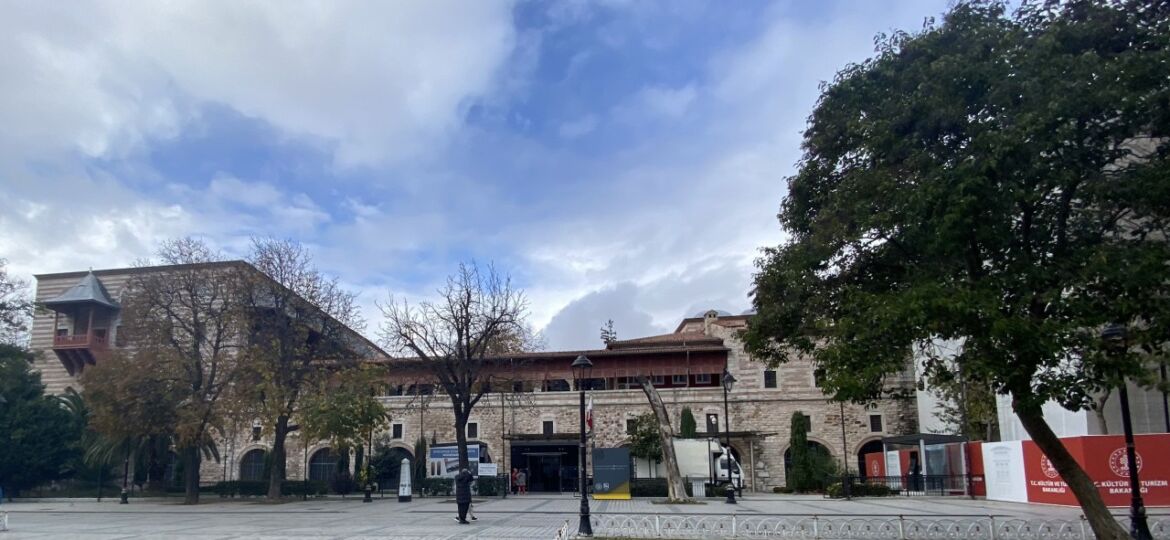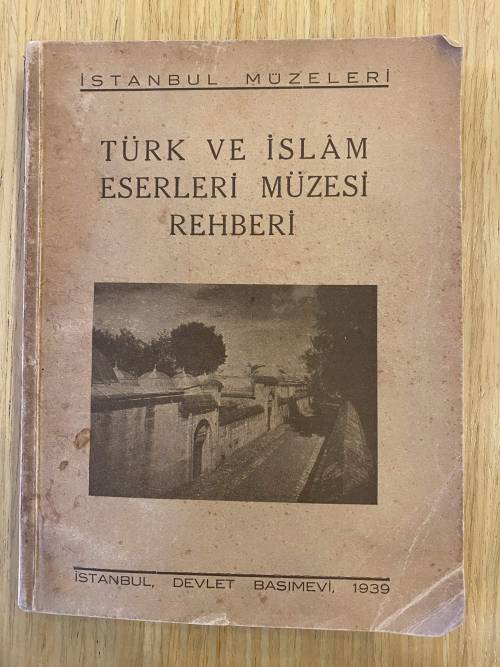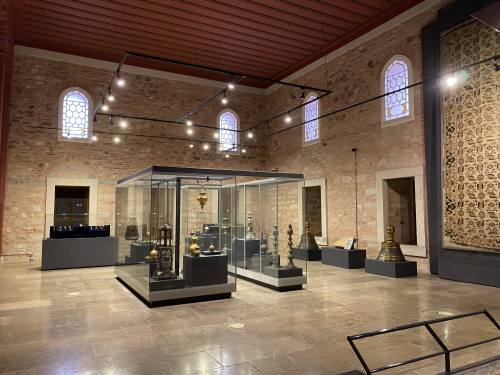
Today, the Byzantinist subgroup of the ANAMED fellows (which really is a loose grouping of scholars who either work on Byzantine topics or are otherwise interested in Byzantine Studies) went on a visit to the Museum of Turkish and Islamic Art (Türk ve İslam Eserleri Müzesi, hereafter TİEM).
TİEM is located on the Hippodrome, facing the Sultan Ahmed Mosque, in the İbrahim Pasha Palace (Figure 1), named thus because it was once the residence of Ottoman grand vizier Pargalı İbrahim Pasha (d. 1536). The museum is one of the locations where I have been conducting research for my project at ANAMED (Figure 2). TİEM has been in this location since 1983. Previously, since its foundation in 1914 (until 1927 under the name “Evkaf-ı İslamiye Müzesi”), it had been located in the imaret of the sixteenth-century Süleymaniye Mosque complex, as seen on the title page of a museum guide published in 1939 (Figure 3).

Figure 2: The author heading to a research appointment at TİEM in September 2022.

Figure 3: Title page of the 1939 TİEM guidebook.
Much of the collection consists of objects that were taken from former Ottoman lands or were already located in historical monuments within present-day Turkey and beyond. In the early twentieth century, in part because of increased looting to supply the European art market with Islamic objects then fashionable among collectors, objects were removed from monuments across the Ottoman Empire and put aside for the museum founded in 1914. The history of the museum is told in the catalog Türk ve İslam Eserleri Müzesi 100 Yıl Önce (Figure 4), published for the museum’s one-hundredth anniversary in 2014. The catalog shows records that document from where objects were removed at which dates, and also notes that some objects were exchanged with the collections of Topkapı Palace, which is effectively the historical art collection (containing everything from arms and armor to china and kaftans) of the Ottoman dynasty.

Figure 4: Türk ve İslam Eserleri Müzesi 100 Yıl Önce, 100 Yıl Sonra (Ankara, 2014).

Figure 5: Partial view of the room at TİEM holding Ottoman objects.
The museum is arranged partially chronologically, starting with early Islamic art, and partially by dynasties and geographies. Thus, dynasties of Iran and central Asia such as the Great Seljuks, Timurids, Safavids, and Qajars are arranged in chronological order in adjacent rooms. The exhibition culminates in two rooms dedicated to Anatolian Seljuk and Ottoman art (Figure 5), which form strong points of the collection. During our visit, we discussed different types of tile-making techniques in the Ottoman Empire, the issue of distinguishing “Byzantine” and “Islamic” ceramics in medieval Anatolia, and molded Seljuk ceramic vessels. We were also intrigued by the various types of lighting devices that were made for mosques: brass candlesticks that ranged from 25 to nearly 90 cm in height and held wax candles, transparent glass lamps with enameled and gilded decoration that held olive oil, and pierced metal lanterns are only some of the objects we saw and took as the starting point of a discussion of lighting in Byzantine and Islamic sacred buildings. Relatedly, the large carpet collection led to questions on the isolation and heating of rooms—in the İbrahim Pasha Palace, large fireplaces would have helped with heating and could have been the source for gleaming coals to be placed in portable braziers (Figure 6). Bidding farewell to the resident cats (Figure 7), we then went on to visits of the Cistern of Philoxenos (Binbirdirek Sarnıcı) and Topkapı Palace.

Figure 6: A fireplace in the İbrahim Pasha Palace.

Figure 7: The youngest members of TİEM’s crew of resident cats.

